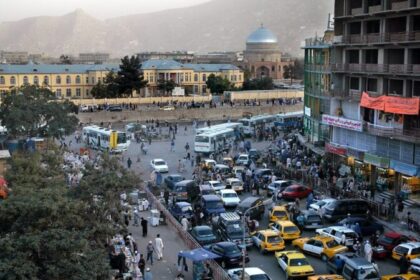RASC News Agency: Local sources in Herat province report that a Taliban fighter was fatally shot on Wednesday morning, August 20, following what began as a trivial verbal quarrel but quickly escalated into an armed confrontation. The incident took place in the Firozabad area near the Kandahar Gate of Herat city, a bustling district where residents say armed Taliban men often intimidate civilians. According to witnesses, the episode began when a Taliban member confronted a motorcyclist in a heated verbal exchange. The Taliban fighter, in an attempt to assert dominance, struck the rider and slapped him across the face. Instead of retreating, the motorcyclist believed also to be affiliated with the Taliban drew his firearm and opened fire, killing the Taliban fighter instantly before managing to flee the scene.
The identities of both men remain unknown, and true to their pattern of secrecy and denial Taliban officials have offered no comment on the killing. Photographs and videos circulating across social media platforms show the slain Taliban fighter armed at the time of the altercation, underscoring the group’s normalization of carrying weapons in civilian spaces. This violent episode is not an anomaly but part of a disturbing pattern. Since seizing power in 2021, Taliban fighters have repeatedly turned their weapons on one another in petty disputes rooted in tribal rivalries, personal grudges, and unchecked egos. These recurring shootouts often erupting from the most minor of provocations highlight the absence of professionalism, discipline, and a coherent chain of command within the Taliban ranks.
For residents of Herat, the tragedy serves as yet another reminder that life under Taliban rule is marked not by stability, but by lawlessness and insecurity. Instead of functioning as a disciplined security force, Taliban fighters act as armed gangs draped in religious slogans, operating without oversight or accountability. Their weapons, meant to project the illusion of control, more often sow fear among civilians and even consume their own men. Observers note that such incidents reveal the inherent fragility of the Taliban’s governance. What the group brands as an “Islamic Emirate” is, in reality, a fragile coalition of fighters bound not by ideology or law, but by personal interests and brute force. The Herat shooting illustrates the dangers of a regime where grievances are resolved not through courts or mediation, but through bullets fired on crowded streets.
In the words of one Herat resident interviewed by News outlets: “If the Taliban cannot control their own men, how can they ever guarantee security for the people? We live in fear, because even their smallest quarrels can cost lives.” This latest killing once again underscores the Taliban’s greatest vulnerability: their inability to transform from insurgents into a governing body. Instead of delivering peace, they have normalized a culture where every disagreement carries the potential to erupt into lethal violence, leaving ordinary Afghanistanis caught between their rivalries and their guns.






